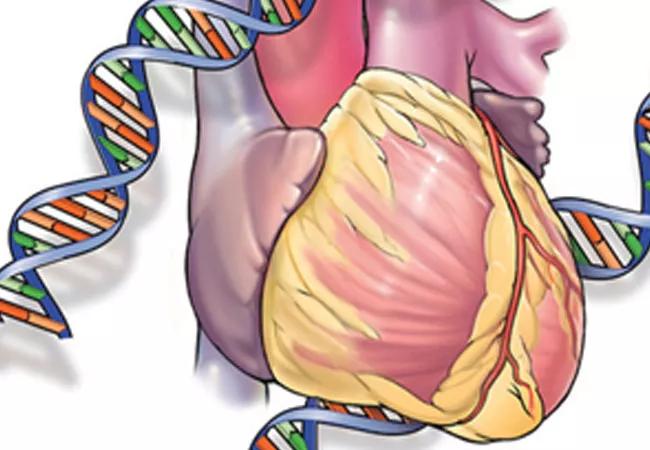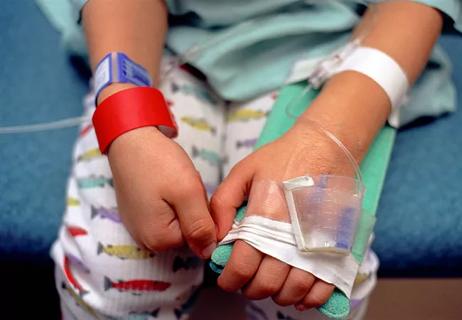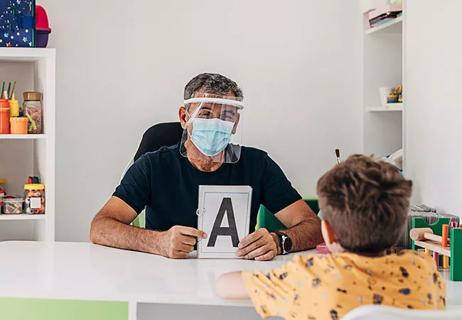Procedure halts refractory ventricular arrhythmias in teenager with HCM

By Benjamin H. Hammond, MD, Madeleine L. Townsend, MD, and Peter F. Aziz, MD
Cleveland Clinic is a non-profit academic medical center. Advertising on our site helps support our mission. We do not endorse non-Cleveland Clinic products or services. Policy
We present the known case of a 15-year-old male with hypertrophic cardiomyopathy (HCM) and intractable ventricular arrhythmias, who was successfully treated with left cardiac sympathetic denervation as an alternative to heart transplantation.
The patient first presented to Cardiology at age 7, following an abnormal electrocardiogram during ADHD screening. Echocardiography confirmed hypertrophic cardiomyopathy (HCM), and genetic testing revealed a pathogenic variant in the MYH7 gene. He was asymptomatic at the time.
The patient was then lost to follow-up until he suffered a cardiac arrest three years later while playing basketball and was resuscitated by a bystander using CPR and an automated external defibrillator. He was subsequently hospitalized and received an implantable cardioverter-defibrillator (ICD) prior to being discharged home.
Within one year following ICD placement, the patient experienced syncopal events on two occasions. Both times, ventricular fibrillation (VF) was detected, and his device delivered appropriate, successful therapy. Medical treatment with sotalol and metoprolol was initiated. After the second event, sotalol was replaced with amiodarone, and he was given an ambulatory monitor, but no occult arrhythmias were detected.
Another arrest occurred two years later. An initial shock converted him to sinus rhythm, but he rapidly returned to ventricular tachycardia (VT), which degenerated to VF. Two subsequent shocks were unsuccessful, and he required external defibrillation to restore sinus rhythm. He recovered and went for defibrillation threshold testing (DFT) two days later, at which time we decreased his VF zone, programmed a VT zone and decreased his interval detection. Amiodarone was discontinued out of concern that it was causing lower ventricular arrhythmia rates as well as DFTs.
Ten months later, the patient was playing outside when he was shocked nine times for several VT and VF episodes. We increased his metoprolol dose. Five months later, he was back in the hospital following six VF events, which were treated successfully with ICD therapy.
At this time, given his history of intractable ventricular arrhythmias, evaluation for heart transplant was initiated. As we consider transplantation a last option, we felt left cardiac sympathetic denervation (LCSD) would be worth exploring as an alternative. His parents agreed, and he underwent video-assisted left cardiac sympathectomy with transection of the bottom half of the stellate ganglion and remaining sympathetic chain in March 2018.
The patient recovered well from the procedure. Complications of ptosis and miosis were temporary and resolved within 3 months. He was transitioned to nadolol for beta blockade. A brief postoperative exercise test showed no arrhythmias and he was discharged home on postoperative day 6. During the ensuing 18 months, no further ventricular arrhythmias were detected.
HCM is the most common cause of sudden cardiac death from ventricular arrhythmias in young people. In those who survive, ICDs are indicated for secondary prevention. Heart transplant is considered when patients continue to experience intractable ventricular arrhythmias despite medical therapy. LCSD is increasingly used as anti-arrhythmic therapy in patients at risk for sudden arrhythmic death, particularly in patients with inheritable channelopathies.
The risk of ventricular arrhythmias in patients with HCM, particularly in the young, is difficult to predict. To our knowledge, there is only one other case of LCSD in HCM reported in the literature: A 3-year-old, who was successfully treated in 2011, with effective postponement of transplantation.
Given the limited experience in this population, LCSD will likely remain an alternative therapy until multicenter studies can be conducted. However, we feel it is reasonable to consider LCSD in patients with HCM and intractable ventricular arrhythmias undergoing evaluation for heart transplantation.

Cleveland Clinic physicians offer their insights

Increasing support for breastfeeding patients

Program has facilitated nearly 300 consults across 25 departments in less than a year

Though completely preventable, lead poisoning remains a public health threat

Differences in infection rates, management, outcomes and transmission

Helps patients visualize proper tongue placement

On the need for coordinated care